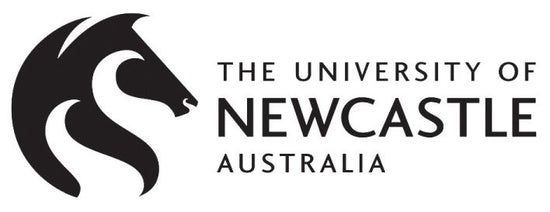-

New Research by The University of Newcastle PDF
NEW! ‘A systematic literature review of decodable and levelled reading books for reading instruction in primary school contexts: an evaluation of quality research evidence.’— University of Newcastle Research Alliance for Language, Literature & Literacy (March 2022)
Collapsible content
Johnson (1995) ‘The Handwriting, Reading and Spelling Sequence (THRASS).
An Evaluation Of A Two Term Pilot Study’. This intervention has demonstrated that THRASS is an effective method of raising children’s levels of achievement in reading throughout the Primary range. All the groups made gains that resulted the gap between reading age and chronological age being reduced.
Lovegrove (1998) ‘Reading Acquisition Using Phonemic Strategies For Students Experiencing Difficulties With Learning’. Published in the ‘Australian Journal of Learning Disabilities’, Volume 3, Issue 2 June 1998, pages 31-37.
Pre-and post-testing results from this case study report ‘significant gains from THRASS when compared to a matched control over an 8-week intervention period’. Results indicated that the student on the phoneme- grapheme based program THRASS appeared to make more significant gains than her matched partner receiving Direct Instruction, even in the short time period of this study. The THRASS program was observed to increase accessibility to everyday reading material, provide an easy modeling tool for adult assistance in spelling and reading and provide a more consistent basis on which to make judgments or choices of graphemes-phonemes without having to learn a variety of rules or sayings.
Matthews (1998) ‘Special Initiative To Enhance Literacy Skills In Bridgend’.
This thirteen-week intervention study showed a Ratio Gain of 2.5 in Spelling for children in Year 3 and Ratio Gains in Reading Accuracy of 2.3 for Year 3s, 2.4 for Year 4s, 3.4 for Year 5s and 2.4 for Year 6. There were Ratio Gains in Reading Comprehension of 2.3 for Year 3s, 2.7 for Year 4s, 3.8 for Year 5s, 4.2 for Year 6s.
Brooks (2002) ‘What Works For Children With Literacy Difficulties-The Effectiveness Of Intervention Schemes’.
Brooks (2002) ‘What Works For Children With Literacy Difficulties-The Effectiveness Of Intervention Schemes’.
DfES (2003) (Department For Education & Skills), UK 2003.
The Department for Education & Skills, ‘National Literacy Strategy’ guidance leaflet (NLS Ref 0201, May 2003), recommends THRASS because NLS research indicates that there is ‘at least double the normal rate of progress’ for many pupils.
Boutilier and Norris (2003) ‘Using THRASS In Secondary Schools: Evidence For Highly Significant Improvements In literacy skills’.
Concluded that ‘THRASS resulted in significant improvements in the literacy skills of secondary pupils’. This study showed mean Ratio Gain scores for secondary school students (Year 8 and 9) for spelling and reading comprehension. Year 8 Spelling: 1.71, Year 9 Spelling: 1.93, Combined Year 8 and 9 Reading Comprehension: 1.85, Combined Year 8 and 9 Reading Accuracy: 1.22. On average 40.5% of students achieved ratio gains of 2.0 or more for spelling. Interestingly, although reading skills were not the specific target of the intervention there were gains in both accuracy and comprehension, with 44% of students achieving Ratio Gains for reading accuracy of 2.0 or more and 32% achieving gains of 2.0 or more for reading comprehension.
Edington And Shapwick School (2003) Study conducted November 2002-May 2003.
A Study Of Secondary Age Dyslexics. Ratio gains were between 4.0 and 6.0 for spelling when they received 10-30 minutes of THRASS training per day for 5 months. Using the Vernon Spelling Test, a group of Year 8 dyslexics made 30 months progress in spelling (Ratio Gain=6.0) in 5 months. A group of Year 7 dyslexics made 20 months progress in spelling (Ratio Gain=4.0) in 5 months. One pupil improved three-and-a-half-years in the five months.
Greaves (2005) ‘THRASS Phonemic Teaching’.
Data from two small-scale Australian studies showing the efficacy of the THRASS program on various aspects of reading and spelling are presented. Two regular primary school junior classes were compared over a 10-week period. One class had THRASS instruction. The other class was a control. The THRASS class showed significant improvement on pseudo-word reading, spelling, word identification and one aspect of phonological processing. A similar study design was conducted with secondary school remedial students in withdrawal classes with similar findings. This study refers specifically to the Perri (2005) and the Parry (2005) studies listed in this summary.
McLachlan (2005) ‘The effectiveness of the Teaching Handwriting, Reading And Spelling Skills (THRASS) Program As An Intervention For Literacy Problems In A Secondary Setting’.
This ten-week intervention study was conducted in three schools with students experiencing literacy problems. The study concluded that, ‘The THRASS group showed significantly greater improvement to a matched comparison group, in a literacy score consisting of the WIAT sub-tests of Pseudoword Decoding, Spelling, Word Reading and the Test of Reading Comprehension’. ‘Ratio Gains generated strong evidence of the effectiveness of the THRASS program, with Ratio Gains of 3.0 compared to -0.47 with the comparison groups on the three measures of Pseudoword Decoding, Spelling and Word Reading’. ‘This means that in the 10-week program, using these measures the THRASS group increased their reading and spelling ages by an average of 30 weeks, whereas the comparison group on average actually decreased by 5 weeks’. ‘The students not only benefited immediately after the program had ended, but maintained their gains for at least another four months’.
Parry (2005) ‘Exploring The Effects Of The THRASS Program On Phonological Processing, Reading And Spelling Of Year 1 And 2 Students’.
Concluded that ‘Explicit phonics instruction, as implemented in the THRASS program, is a critical step leading to a balanced language reading program’. ‘There was a significant difference in pseudoword reading age scores for the THRASS group compared to the non-THRASS group following the intervention’. ‘The THRASS group increase in mean pseudoword reading age is 26 months, whereas the non-THRASS group increase is six months’. ‘The interaction of time and the THRASS group and the significant effect of the THRASS group suggests pseudoword reading scores following the intervention have improved significantly more for the THRASS group’. Other measures included: ‘The THRASS group increase in mean spelling age is seven months, whereas the non- THRASS group increase is two months’. ‘The THRASS group increase in mean reading age is ten months, whereas the non-THRASS group increase is four months’.
Perri (2005) ‘The Effect Of The THRASS Program On Secondary School Students Literacy And Wellbeing’.
Concluded that, ‘As well as being significantly more effective in teaching literacy skills by ensuring students understand the fundamentals of reading acquisition, THRASS has shown to improve academic and general self- perceptions for students with learning difficulties’. ‘There was a significant difference between the THRASS group and the comparison group in pseudoword decoding and single word reading immediately after the ten weeks intervention. ‘Ratio Gain scores showed the THRASS group to be learning at 3 times the controls group’s rate’. Furthermore when tested again five months after the intervention ceased (and many students no longer received any literacy assistance) a significant overall main effect was found for the THRASS intervention group. ‘Ratio Gains also demonstrated significantly better improvement for the THRASS group over the comparison group on the three word level measures both at post test and five months later’.
In 2005 two Queensland schools (populations of indigenous students who speak English as a second or third language), won Australian Literacy Awards. Official literacy data and testing from the Year 3 students, who had been doing THRASS for three years, showed that these children were at or above state benchmark. Principals of both schools have stated that the impact made by THRASS teaching strategies was clearly the main variable in securing these outstanding results. Both teachers and indigenous aides were trained in THRASS and were involved in the teaching process’.
Burgess (2009) ‘To THRASS or not to THRASS’.
This paper examined the suitability of THRASS for use in adult literacy programs. The paper concluded that, ‘sufficient elements of good phonics instruction as described in the research review are evident in THRASS to merit its inclusion in adult literacy programmes. The importance of strategies to assist the development of phonological awareness is well noted. THRASS does this explicitly while maintaining an emphasis on real writing and reading. It provides a set of resources that are therefore compatible with whole language and functional literacy approaches. The THRASS Chart acts as a motivational and confidence building tool kit that adult students may use, when needed, as a reference that re-inforces familiarity with grapho-phonemic units. Its use can be applied to any whole language or functional literacy task.
The flexible, multi-sensory and interactive nature of THRASS resources and methodology caters well for the varying abilities and demands of adult learners. Strategies such as word analysis by analogy and emphasis on independent and self-reflective learning are well suited to the learning styles of adult students’.
Please note that the above paper incorrectly identifies THRASS as a ‘British scheme’. In fact the co-authors of THRASS are Denyse Ritchie from Perth, Australia and Alan Davies from Chester, England.
Siik & Hawkins (2013) ‘THRASS PHONICS: A Case Study Of Thomas As An Emerging Reader In English’. Published in ‘The English Teacher’, Vol. XLII(1) April 2013.
This study aims to evaluate the capacity of THRASS phonics, in teaching English literacy skills, to a Chinese Malaysian primary school student, in Kuching, Sarawak. The authors selected case study as the theoretical framework to illustrate the impact that THRASS phonics had on both teacher and student during the study. The paper discusses the findings and concludes with the implications for further phonics research in Malaysia. The study concludes that, ‘THRASS phonics is a compelling instrument that can be used by Malaysian English teachers to ensure systematic and comprehensive phonemic and phonics instruction with students throughout Malaysia.’
Rahim & Brown (2015) ‘Systematic Phonics Intervetion and its impact on the Development of Phonics Skills and Speech Perception among Children with Hearing Loss using Spoken Language’.
Published in the International Academic Research Journal of Social Science, 1(2) 2015 Page 206-210. ISSN: 2289- 8441. ‘The findings of the study indicated positive results in the development of practical phonics skills based on the THRASS programme.’
Powell (2015) Principal’s Sabbatical Report, Shannon School
‘To research, critically examine and report on the use of the THRASS Teaching Handwriting, Reading and Spelling Skills (Davies & Ritchie) programme and its particular relevance to improved literacy learning outcomes in the Junior School. To review and reflect on the enablers and barriers of THRASS and its phonemic and graphemic approach in preference to other literacy teaching and learning approaches.’
OTHER RELATED STUDIES
Tajuddin & Shah (2015) ‘TEACHERS’ KNOWLEDGE OF PHONEMIC AWARENESS AND ITS INSTRUCTION IN ESL LEARNING – SUB-URBAN PRIMARY SCHOOL IN MALAYSIA
Published in the International Journal of Technical Research and Applications, e-ISSN: 2320-816, www.ijtra.com Special Issue 22 (July, 2015), PP. 72-79. P74 of this study mentions the 2013 paper on THRASS by Siik & Hawkins.


